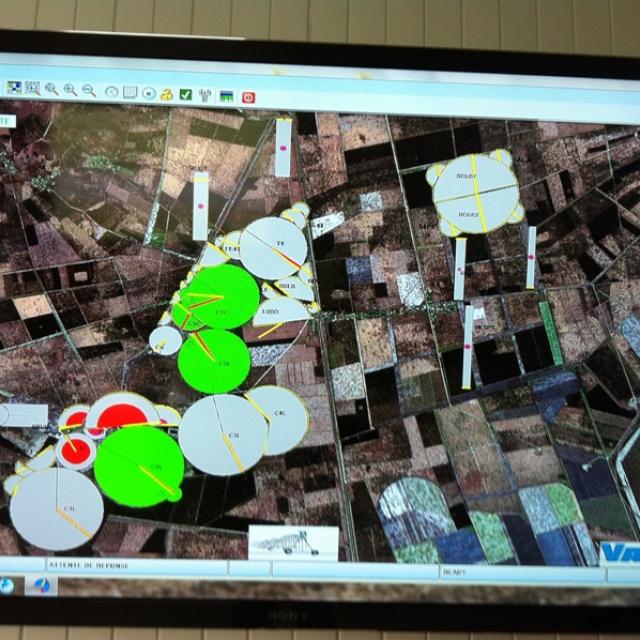Precision agriculture is a technology that is receiving attention by industry, researchers and farmers. Precision agriculture means applying the right of amount of inputs to a field (seed, fertilizer, pesticides and water) at the right time and in the right place.

This technology is dependent on the introduction of many new tools for enhancing the level of management.
The advent of global positioning systems (GPS), the geographical information system (GIS), yield monitors, variable rate seeding, and variable rate fertilizer application equipment are examples of currently available technologies. These tools are moving production agriculture into the information age.
The use of GPS systems and yield monitors on harvest machinery provides data for generating yield maps. These maps are processed with GIS technology. The GPS is providing the technology for automatic guidance systems for farm tractors and center pivots systems.
As precision agriculture matures, producers will apply water pesticides and fertilizers variably throughout the growing season. GPS technology will aid in the development of maps specifying the amount of inputs required in various parts of the field. The center pivot system is expected to convey both chemicals and water to the soil.
Controllers on center pivots system will become much more complex in order to be able to integrate the prescription map for water and chemicals and variably apply the production inputs.
GPS technology will aid in the development of maps specifying the amount of inputs required in various parts of the field. The center pivot system is expected to convey both chemicals and water to the soil.
The controllers will also be enhanced with increased data collection. Maps – showing the actual amounts of water, fertilizer and pesticides applied – will be generated and document management practices will be documented to meet the objectives of conserving water and limiting water degradation.
The control sequences will be programmed from the control panel in the field or from a computer in the farm office sending the desired operations either by radio or wireless phones. Cell phones are already able to communicate with center pivots to monitor and control the operational status of the center pivot on a real time basis. It is also possible to use the Internet to monitor and control an irrigation system. Using the Internet a farmer will be able to communicate with the irrigation system from anywhere in the world.
Sensor technology is also being developed that can measure soil water and crop stress. The soil water sensors will be connected to the irrigation controller in order to provide the manager with the feedback required for making more timely decisions and control the amount of water applied.
Using the Internet a farmer will be able to communicate with the irrigation system from anywhere in the world.
Timing and amounts of fertilizers and pesticides will be based on sensors, mounted on center pivots systems. The specific location in the field will be identified for the timely application of water fertilizer and pesticides.
Precision agriculture and precision irrigation will provide technology for conservation and minimizing pollution.
The new technology and trends for center pivot irrigation will closely parallel the adoption of the tools and technology used in the rest of society. It is societal demands and opportunities of society that become an integral part of the future of irrigation. Technological integration and Nano technology are two examples. Very small sensors capture the various parameters in an irrigated field. The response from these sensors may be read from a central receiver mounted on the center pivot. The sensor will be able to measure the gases given off by plants which indicate whether they are suffering from water stress, lacking in fertilisers or affected by disease. Plants may be bred to give off different gases that will isolate the type of stress that is occurring. It will be possible to generate real time maps indicating the areas in the field that are suffering from stress.
These maps can be put into a control system and the required input applied variably by the pivot to relieve stress. The next step could be to measure the stress interface directly with the controller, in order to apply the necessary inputs as the information is supplied by the sensor. It is easy to imagine the many types of information that will be added to the data base which, when analyzed, will improve management decisions.
An improvement in the quantity and quality of the food product is expected to result in lower production costs and sustainable profits foe the farmer.
The future is exciting as new technologies make their way into the market place. The changes in irrigation technology and the continued expansion of center pivot irrigation systems will develop in parallel and lead to further progress. The result will be a more abundant food supply for an ever growing world population.


